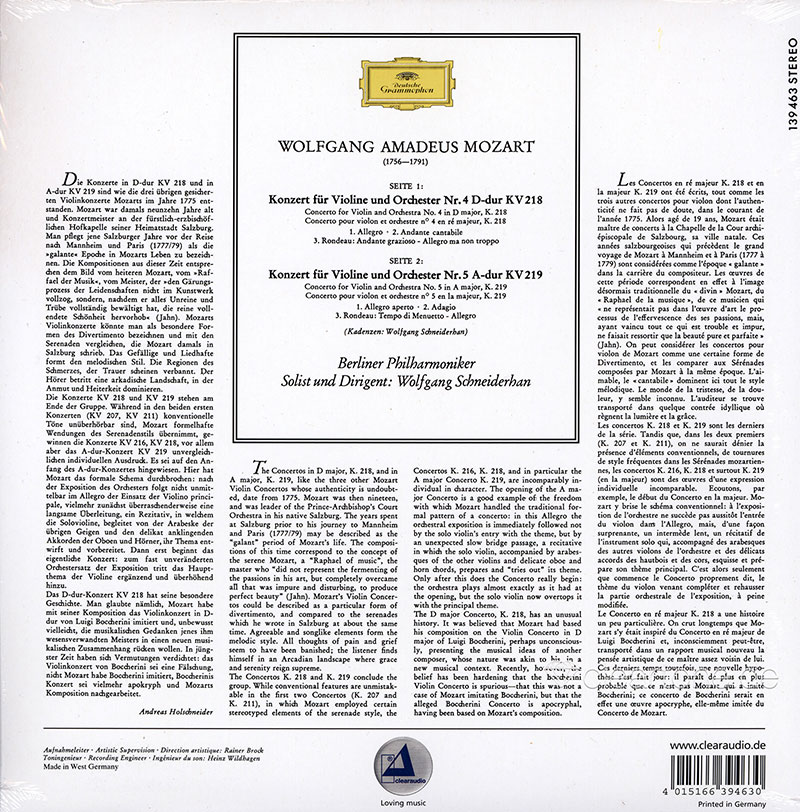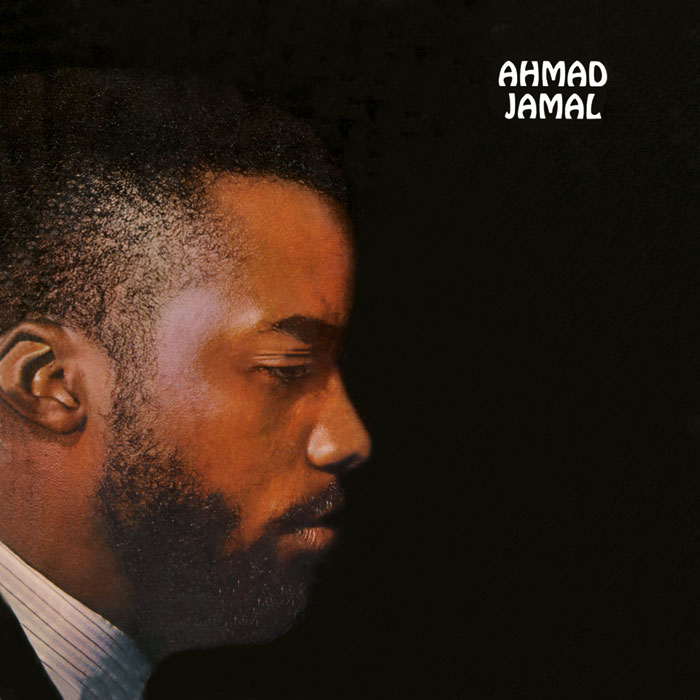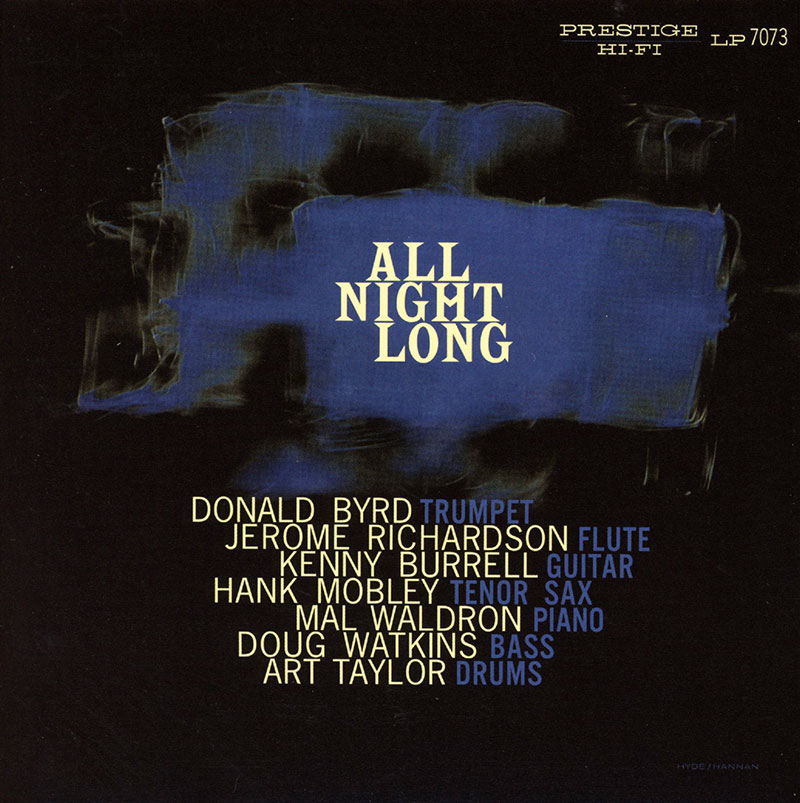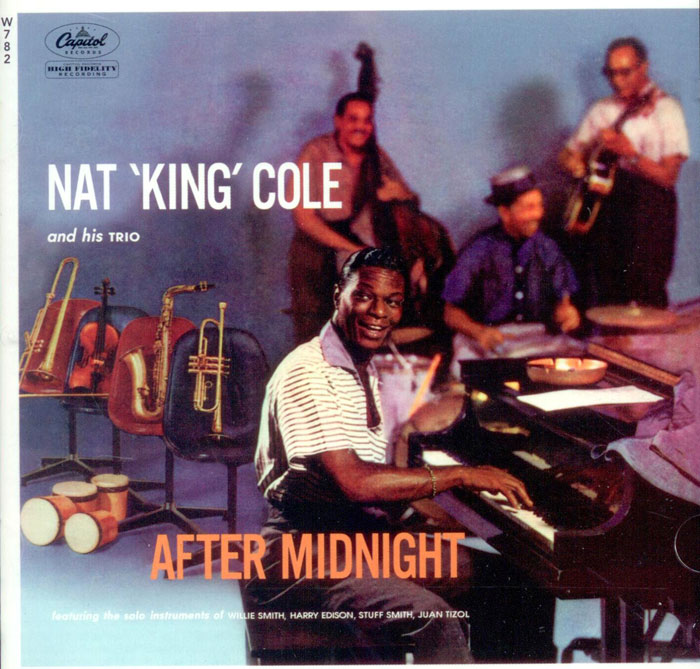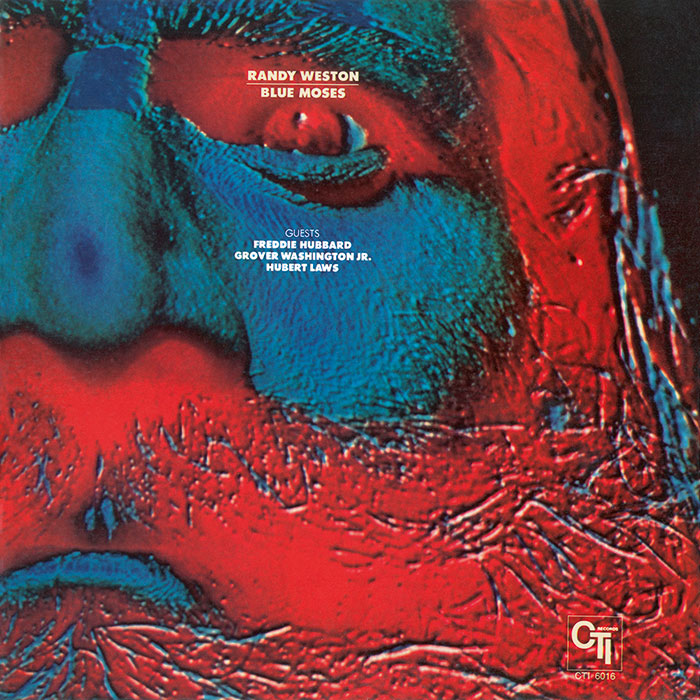Logowanie
Mikołaj - ten to ma gest!
Miles Davis, Horace Silver, Jay Jay Johnson, Percy Heath, Kenny Clarke, Lucky Thompson
Walkin'
20bit K2Super Coding - ale jak to brzmi!
Kasety magnetofonowe
Winylowy niezbędnik
ClearAudio
Double Matrix Professional - Sonic
najbardziej inteligentna i skuteczna pralka do płyt winylowych wszelkiego typu - całkowicie automatyczna
MOZART, Wolfgang Schneiderhan, Berliner Philharmoniker
Violin Concertos No. 4 in D major K. 218 / No. 5 in A major K. 219
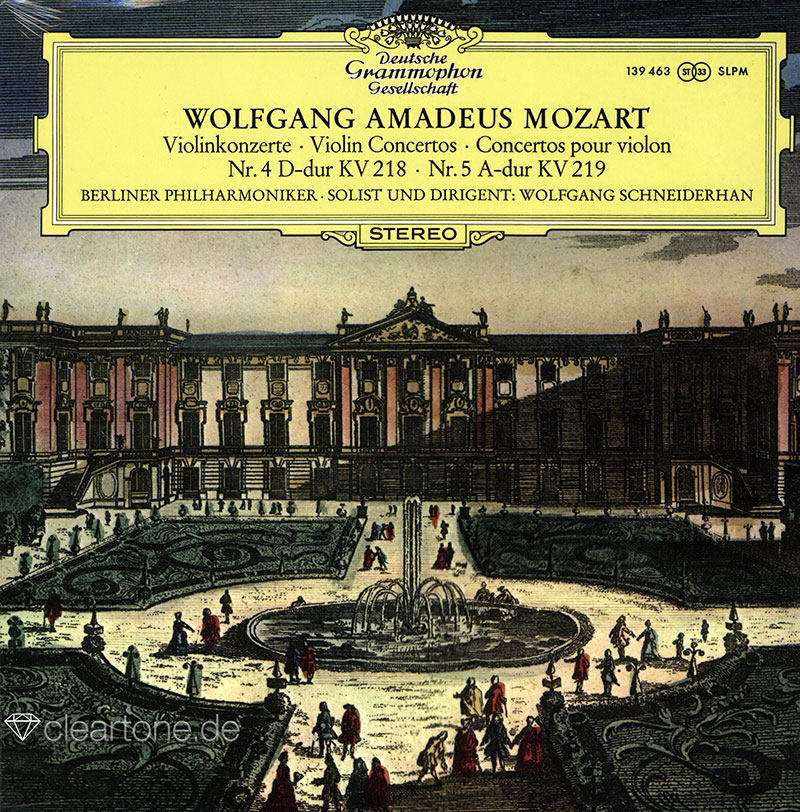
- KONZERT FÜR VIOLINE UND ORCHESTER NR.4 D-DUR KV 21 [8.38]
- KONZERT FÜR VIOLINE UND ORCHESTER NR 4 D-DUR KV 21 [6.37]
- KONZERT FÜR VIOLINE UND ORCHESTER NR.4 D-DUR KV 21 [6.48]
- KONZERT FÜR VIOLINE UND ORCHESTER NR.5 A-DUR KV 21 [9.01]
- KONZERT FÜR VIOLINE UND ORCHESTER NR.5 A-DUR KV 21 [10.13]
- KONZERT FÜR VIOLINE UND ORCHESTER NR.5 A-DUR KV 21 [8.32]
- Wolfgang Schneiderhan - violin
- Berliner Philharmoniker - orchestra
- MOZART
The Concertos in D major, K. 218, and in A major, K. 219, like the three other Mozart Violin Concertos whose authenticity is undoubted, date from 1775. Mozart was then nineteen, and was leader of the Prince-Archbishop's Court Orchestra in his native Salzburg. The years spent at Salzburg prior to his journey to Mannheim and Paris (1777/79) may be described as the "galant" period of Mozart's life. The compositions of this time correspond to the concept of the serene Mozart, a "Raphael of music", the master who "did not represent the fermenting of the passions in his art, but completely overcame all that was impure and disturbing, to produce perfect beauty" (Jahn). Mozart's Violin Concertos could be described as a particular from of divertimento, and compared to the serenades which he wrote in Salzburg at about the same time. Agreeable and songlike elements form the melodic style. All thoughts of pain and grief seem to have been banished; the listener find himself in an Arcadian landscape where grace and serenity reign supreme. The Concertos K. 218 and K. 219 conclude the group. While conventional features are unmistakable in the first two Concertos (K. 207 and K. 211), in which Mozart employed certain stereotyped elements of the serenade style, the Concertos K. 216, K. 218, and in particular the A major Concerto K. 219, are incomparably individual in character. The opening of the A major Concerto is a good example of the freedom with which Mozart handled the traditional formal pattern of a concerto: in this Allegro the orchestral exposition is immediately followed not by the solo violin's entry with the theme, but by an unexpected slow bridge passage, a recitative in which the solo violin, accompanied by arabesques of the other violins and delicate oboe and horn chords, prepares and "tries out" its theme. Only after this does the Concerto really begin: the orchestra plays almost exactly as it hat at the opening, but the solo violin now overtops it with the principal theme. The D major Concert, K. 218, has an unusual history. It was believed that Mozart had based his composition on the Violin Concerto in D major of Luigi Boccherini, perhaps unconsciously, presenting the musical ideas of another composer, whose nature was akin to his, in a new musical context. Recently, however, the belief has been hardening that the Boccherini Violin Concerto is spurious - that this was not a case of Mozart imitating Boccherini, but that the alleged Boccherini Concerto is apocryphal, having been based on Mozart's composition.































